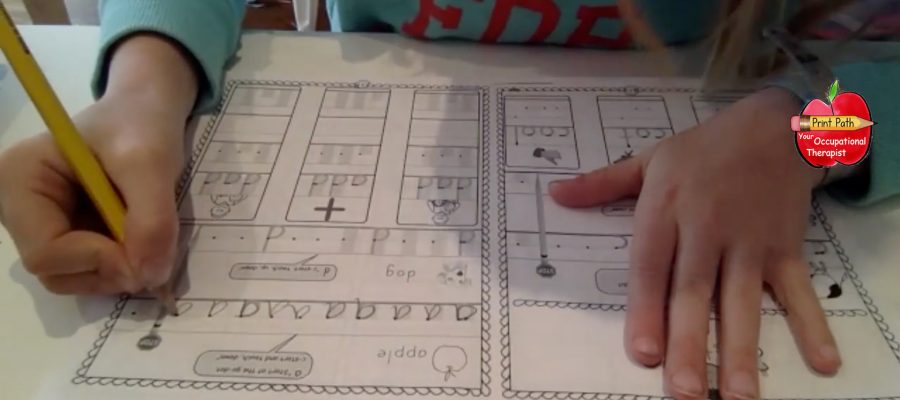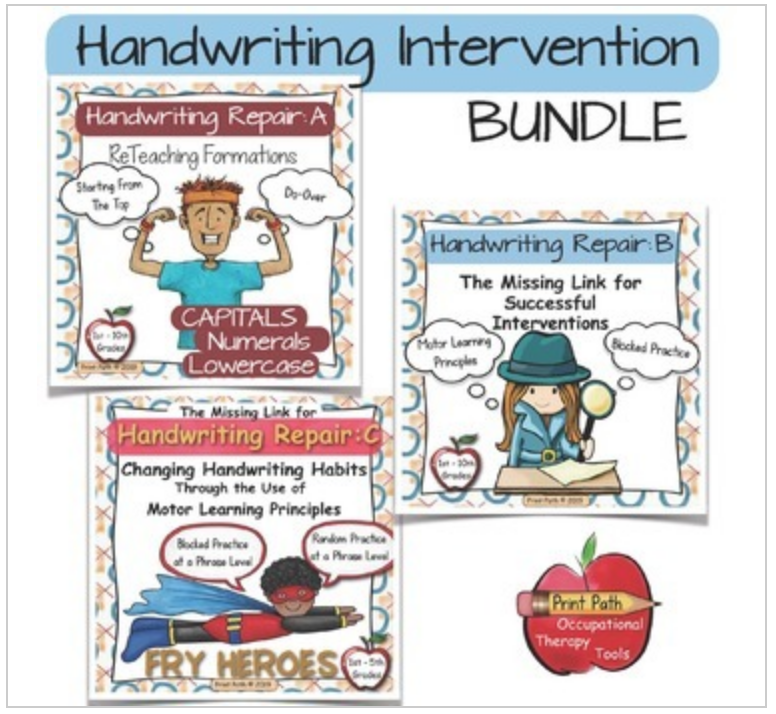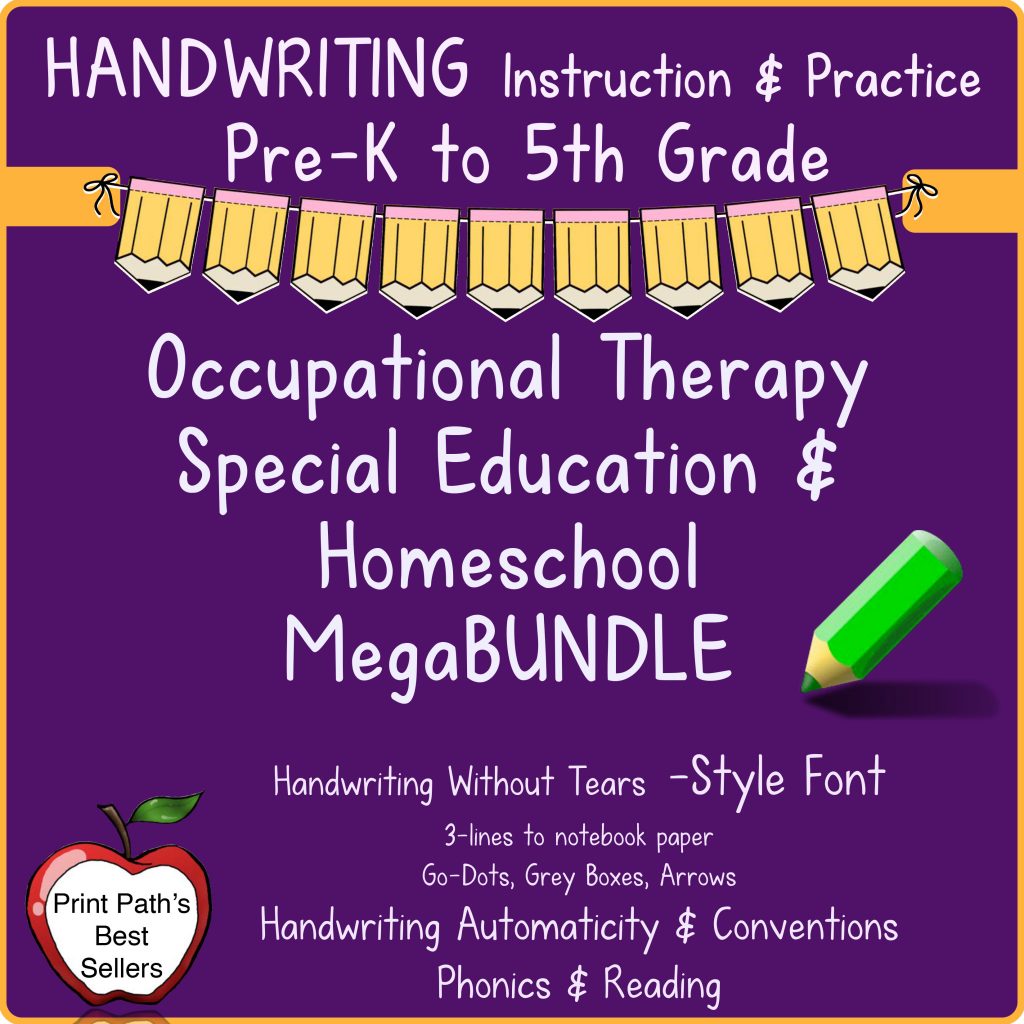Many people have asked me how I am able to teach handwriting using Google, Zoom, or any virtual platform. When COVID-19 first shut down my OT clinic, I had the same question. Now I have some real answers, and I hope these tips will help you with your virtual interventions.
Eleven Tips for Teaching Handwriting Virtually
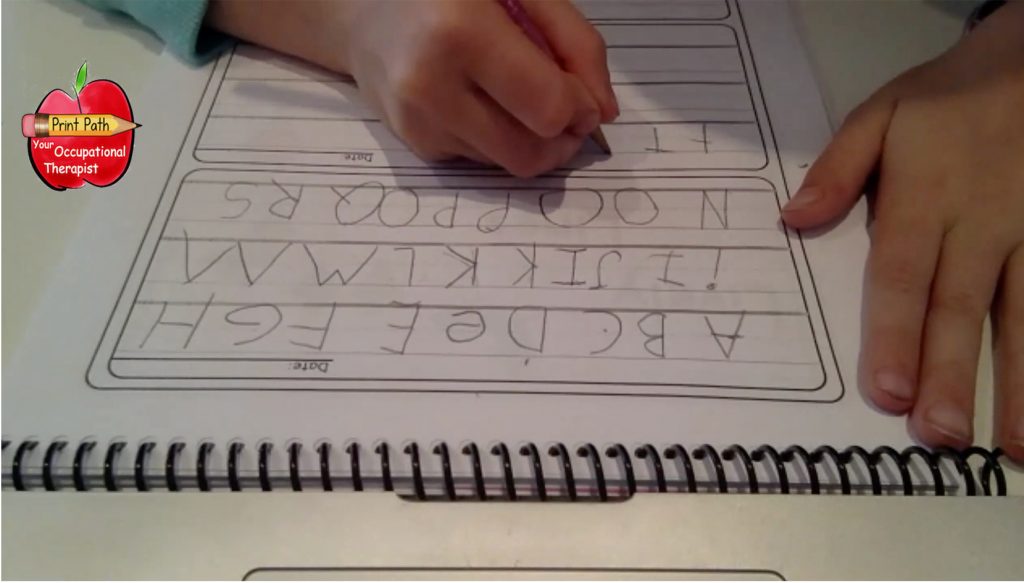
Optimizing the Working Environment
1. If at all possible, ask that your student use a laptop for your virtual sessions. In that case, their camera is mounted so you can easily watch as your student writes letters/words/and sentences. If you look at the bottom of the above picture, you can see the bottom edge of the student’s laptop. Their laptop cover is slightly closed, allowing the camera to point down toward the work surface. My students all quickly learned how to tip the laptop down when I need to see them writing, and open it up again when we need to see each other.
2. Ideally students should be sitting at a workspace wide enough for them to put the paper between themselves and their laptop. Parents can help at first, but my students have easily learned how to adjust the paper and laptop so I can see their hands and their paper.
3. Ask that your student uses a chair that does not swivel. It may also be helpful to discuss with parents optimal ergonomic desk height. “If possible, it would help Susie’s handwriting if she could sit on the stool that brings her to a proper height. We would like it if her forearms could rest comfortably on the table, and her feet are supported by a footrest.”
4. If your student is working in a space where family life is going on around them, you might also suggest that they wear headphones.
*******************************************

Here, students can see my demonstrations through the shared screen of my phone used as a document camera. 
Proper formation of “G”
On the right the students can see my demonstrations via a doc camera.
Explicit Instruction
5. Provide direct instruction and give constructive feedback to students as you usually would. I am able to teach pencil grasp, proper letter formations, use of lines, and size of letters, and also provide practice for building automaticity skills. In the pictures above you can see me demonstrating formations using either my primary laptop camera or a shared screen using my camera mounted on this phone holder.
*******************************************

Pencil Grasp Interventions 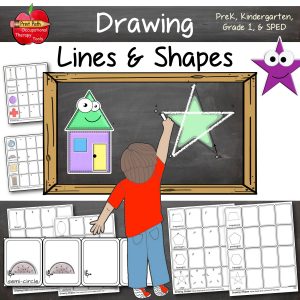
Drawing Shapes: With and without a Model. 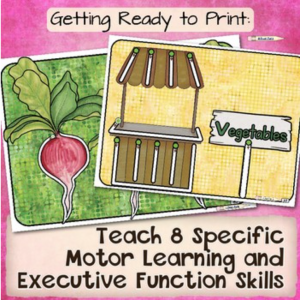
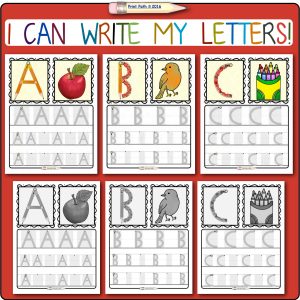
PreK 
Kindergarten 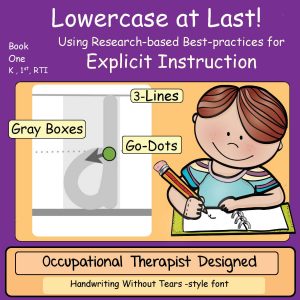
Kindergarten Lowercase 
Lowercase Book 2 & 3 
First Grade Book
Start at The Beginning
From a developmental perspective, kids learn these skills in this order:
6. Holding a pencil using a functional grasp and applying enough pressure to color.
7. Drawing lines and curves.
8. ID & copy capital letters.
9. ID & copy lowercase letters.
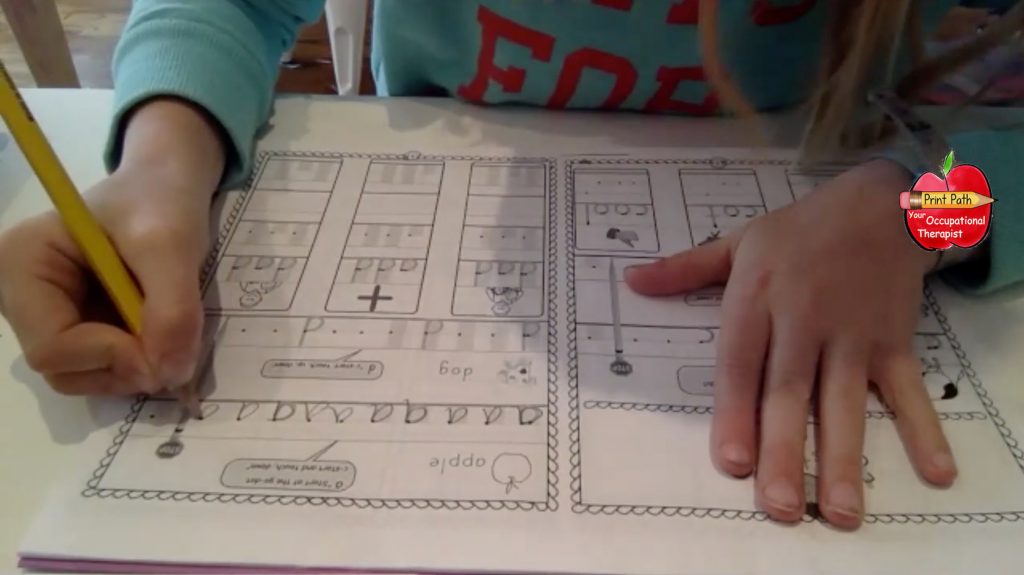
Plan Ahead
10. Choose a quality curriculum that uses a developmental sequence and groups similarly formed letters together. If your students have already learned how to print but have poor habits, you may want to use an age-appropriate intervention tool specifically designed to improve the automaticity of correct formations.
11. Before you start your session, make sure your student has all the printed pages ready to go. I personally ask parents to print an entire workbook and put it in a three-ring-binder, and then I can ask the student to find their work by page number.
With these few modifications, I have found that even with social distancing I can still make a positive impact on my students. I hope these tips are helpful for you.

